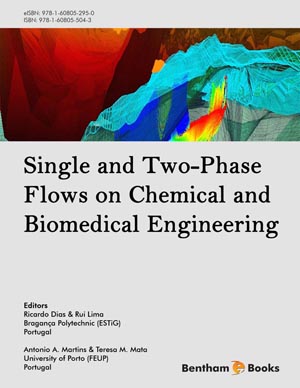Abstract
Flotation is successfully applied in various processes, such as galvanic tailings purification, washing and lubricating liquids treatment, oil/water emulsions separation, etc. An interesting implementation appears to be using flotation as pretreatment in membrane separations. The prospective engineering approach for contaminated wastewaters treatment is combined membrane-electroflotation process.Membrane-electroflotation is a complex physico-chemical process taking place in “liquid-gas-solid” system, based on the hydrodynamic phenomena of gas-liquid streams. In case of membrane flotation the dependence of gas content on bubbling rate has been determined. There are two areas of dependence—at low gas content (5-17%), area I and at higher gas content (17-29%), area II. Based on the value of single bubble emersion rate calculated for every measured bubble diameter, an average volumetric single and group bubble emersion rate in membrane flotation was determined. In electroflotation the average radius of hydrogen bubbles increases from 20 microns to 90 microns depending on module’ height; and stationary distribution of bubbles is achieved upon 1-4 min. Hydrogen bubbles content versus the process time is characterized by the time of retard. At the same time the oxygen appears in electroflotation unit at the very beginning of the process without any retard time. Increase of hydrogen bubbles residence time in the upper sections of electroflotation module leads to rise of average radius and decrease of bubbles containing from 0.00525 to 0.00109.
Keywords: Wastewater treatment, flotation, membrane-electroflotation, gas content, flotocomplex, bubbles flow rate, experimental characterization






















